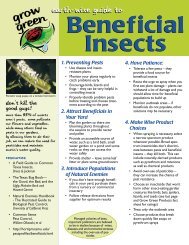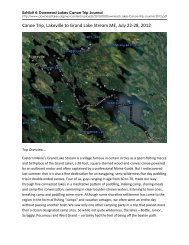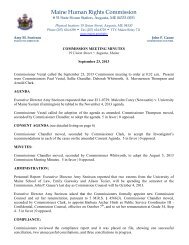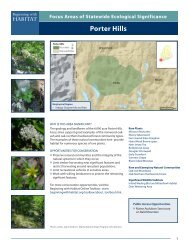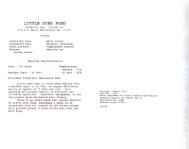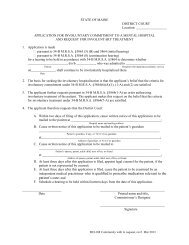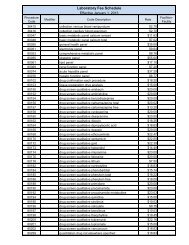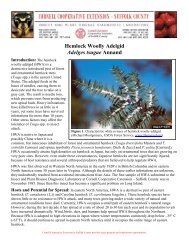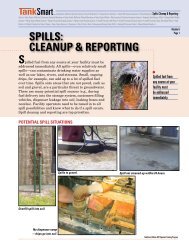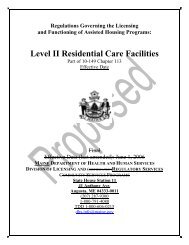TICK-BORNE DISEASES IN MAINE - Maine.gov
TICK-BORNE DISEASES IN MAINE - Maine.gov
TICK-BORNE DISEASES IN MAINE - Maine.gov
Create successful ePaper yourself
Turn your PDF publications into a flip-book with our unique Google optimized e-Paper software.
TULAREMIA<br />
AGENT<br />
Signs/Symptoms<br />
Labs<br />
Bacteria: Francisella tularensis<br />
Tick: Dermacenter variabilis<br />
[Average incubation period 3-5 days,<br />
range 1-21 days]<br />
NOTE: The clinical presentation<br />
of tularemia will depend on a number<br />
of factors, including the portal of entry.<br />
Typhoidal<br />
• Characterized by any combination<br />
of the general symptoms<br />
Oculoglandular<br />
• Photophobia<br />
• Excessive lacrimation<br />
Common Findings on Routine<br />
Laboratory Tests<br />
• Leukocyte count and sedimentation<br />
rate may be normal or elevated<br />
• Thrombocytopenia<br />
• Hyponatremia<br />
• Elevated hepatic transaminases<br />
• Conjunctivitis<br />
• Elevated creatine phosphokinase<br />
General (may be present in all forms<br />
of tularemia)<br />
• Preauricular, submandibular and<br />
cervical lymphadenopathy<br />
• Myoglobinuria<br />
• Sterile pyuria<br />
• Fever, chills<br />
• Headache<br />
• Malaise, fatigue<br />
• Anorexia<br />
• Myalgia<br />
Phyaryngeal<br />
• Severe throat pain<br />
• Cervical, preparotid, and retropharyngeal<br />
lymphadenopathy<br />
Diagnostic Laboratory Criteria<br />
• Demonstration of a four-fold change<br />
in antibody titer in paired sera; or<br />
• Isolation of organism.<br />
• Chest discomfort, cough<br />
• Sore throat<br />
• Vomiting, diarrhea<br />
• Abdominal pain<br />
Pneumonic<br />
• Non-productive cough<br />
• Substernal tightness<br />
• Pleuritic chest pain<br />
NOTE: Detection of organism by fluorescent<br />
assay or a single elevated serum antibody<br />
titer is supportive of the diagnosis; however,<br />
these results should be confirmed by either<br />
Ulceroglandular<br />
one of the methods above.<br />
• Localized lymphadenopathy<br />
NOTE: Pneumonic tularemia should be<br />
• Cutaneous ulcer at infection site<br />
considered in any patient presenting with<br />
community-acquired pneumonia who<br />
Glandular<br />
• Regional lymphadenopathy with no<br />
cutaneous lesion<br />
resides on, or has recently visited, Martha’s<br />
Vineyard, Massachusetts.



